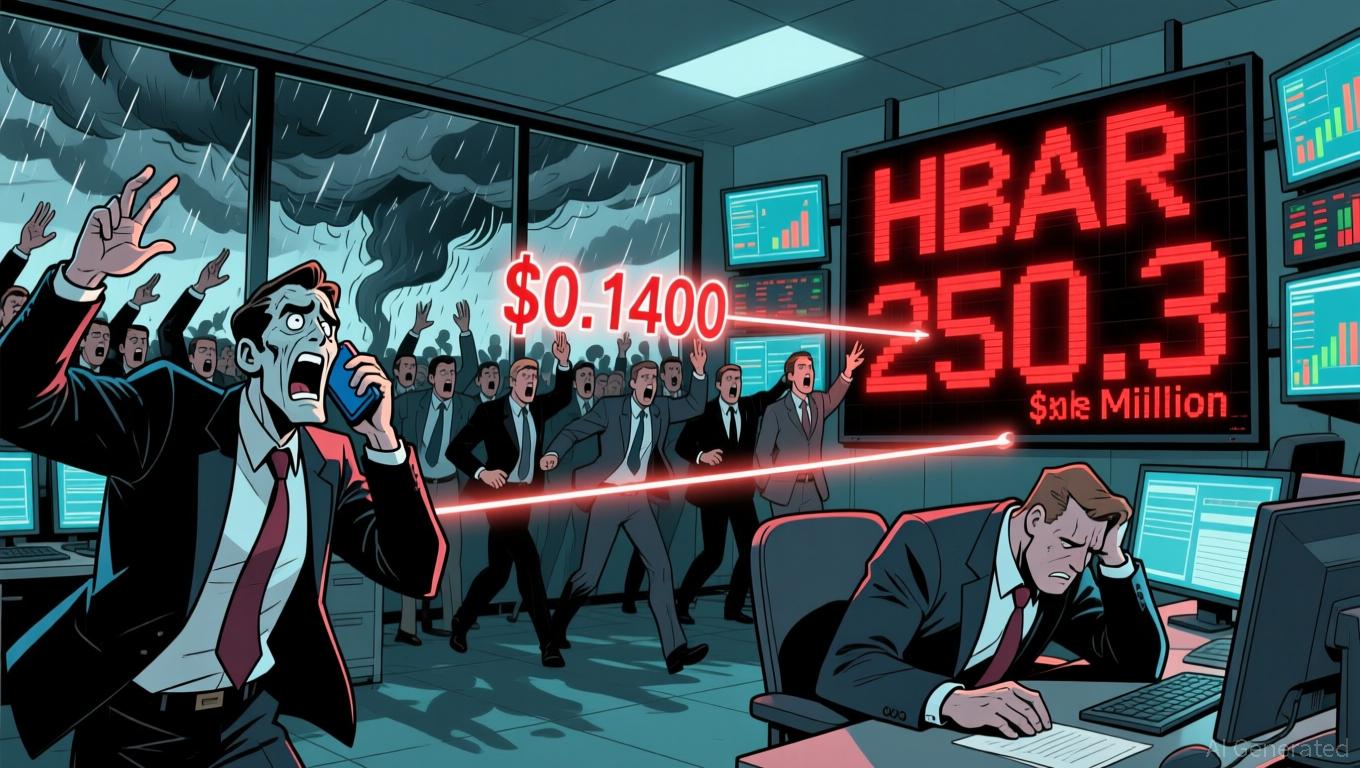ZKP's Code-Driven Fairness Transforms Cryptocurrency Auctions
- Zero Knowledge Proof (ZKP) launches a transparent, fair, anti-whale ICA model using real-time demand and on-chain data for token distribution. - Daily 24-hour auctions allocate 200M tokens via dynamic pricing, with contributions in ETH/USDC/ZUSD determining final prices through algorithmic calculations. - Smart contracts enforce $50,000 per-wallet caps to prevent market manipulation, ensuring equal access through code-enforced fairness. - Pre-built infrastructure including hardware/software and a decentr
Zero Knowledge Proof (ZKP) has opened its whitelist, introducing a new standard in crypto by emphasizing openness, fairness, and protections against large-scale investors. Departing from conventional formats—which are often criticized for lack of transparency and preferential treatment—ZKP utilizes a market-based approach where token allocation is shaped by live demand and transparent on-chain records
The process for ZKP features daily auctions lasting 24 hours, with 200 million tokens made available in each round. Participants can contribute using ETH,

ZKP further strengthens transparency with its ready-to-use infrastructure. Unlike many crypto ventures that begin token sales before their platforms are operational, ZKP had its entire ecosystem—including hardware, software, and decentralized AI computing network—fully built before launching. This strategy removes vague promises of future development and ties the token’s value directly to functioning infrastructure
ZKP’s model has been likened to Uniswap’s Continuous Clearing Auctions, but it sets itself apart through its transparent on-chain process and anti-whale protections. Collaborations, such as its partnership with the Dolphins team of the Australian National Rugby League, demonstrate its expansion into mainstream sectors
The whitelist for the project is now active, and interested users can sign up at zkp.com. Market watchers suggest that ZKP’s transparent and structured approach could set a new benchmark for projects, especially as the demand for fair token distribution continues to rise
Disclaimer: The content of this article solely reflects the author's opinion and does not represent the platform in any capacity. This article is not intended to serve as a reference for making investment decisions.
You may also like
The Emergence of ICP Caffeine AI and Its Impact on Decentralized Computing Markets
- ICP Caffeine AI, developed by DFINITY, redefines decentralized compute by enabling AI app development via natural language and reducing inference costs by 20–40%. - Its reverse-gas token model and "chain-of-chains" architecture boost scalability while creating deflationary incentives, attracting $237B TVL but facing 22.4% dApp activity declines. - Competitors like Palantir ($1.18B Q3 revenue) and struggling BigBear .ai highlight ICP's unique censorship-resistant niche, though centralized rivals maintain
Hyperliquid News Today: Reduced Fees or Doubts? Hyperliquid’s Bold Strategy for Expansion
- Hyperliquid, a top-20 DeFi exchange, faces a 25% HYPE token price drop to $25 amid market volatility and declining investor confidence. - Its HIP-3 Growth Mode initiative slashes trading fees by 90% to attract new markets but has yet to reverse downward trends or boost liquidity. - Analysts warn fee cuts may not address long-term user retention challenges in a crowded DeFi landscape dominated by centralized rivals like Binance. - Market skepticism persists as traders await volume explosions and tighter s
Bitcoin News Today: Bitcoin ETFs See $2.96B Withdrawals as Investors Seek Greater Macro Certainty
HBAR Drops 11.5%: Institutional Withdrawals and Liquidity Challenges Highlight Market Vulnerability
- HBAR token plummeted 11.5% on Nov 21 as institutional selling overwhelmed markets, breaking key support at $0.1350 and triggering stop-loss cascades. - Preceded by prior declines including 6% drop on Nov 18 and 180%+ volume spikes, forming descending channel patterns signaling deteriorating market structure. - Liquidity crises emerged with 250M-token sell wave (98% above average) and trading halts, exposing fragile infrastructure amid crypto market cap falling below $2.9T. - Institutional distribution do
